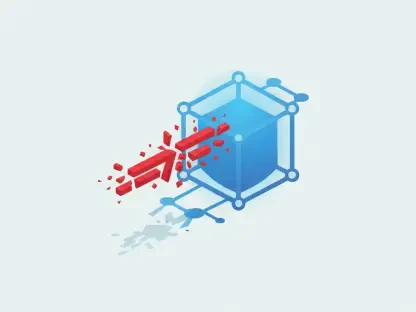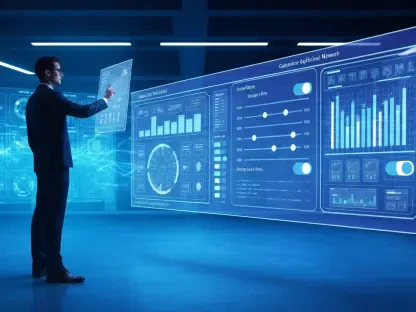In an era where data reigns supreme, businesses are racing to adopt cutting-edge technologies that can provide a decisive edge over competitors, and the convergence of the Internet of Things (IoT)—a sprawling network of interconnected devices that collect and share data in real time—and sophisticated data analytics is proving to be a transformative force. This powerful synergy enables companies to not only react swiftly to changing conditions but also to anticipate trends and deliver highly personalized customer experiences. From optimizing industrial processes in smart factories to enhancing patient care through wearable health devices, the applications are as varied as they are impactful. This article delves into the profound potential of integrating IoT with analytics, exploring how this combination can unlock strategic benefits across multiple industries. By examining real-world applications, key components, challenges, and enabling technologies, the discussion aims to provide a comprehensive understanding of this game-changing approach.
Unlocking the Potential of Connected Data
The foundation of modern business innovation lies in the vast streams of data generated by IoT devices, which range from simple household gadgets to intricate industrial sensors. When this data is processed through advanced analytics, including Artificial Intelligence (AI) and Machine Learning (ML), it becomes a treasure trove of actionable insights. Companies can monitor their operations as events unfold, identifying inefficiencies or opportunities without delay. More than just data collection, this integration empowers decision-makers to transform raw information into strategic tools that enhance productivity. For instance, a logistics firm might use real-time data to reroute shipments instantly based on traffic conditions, saving time and costs. The ability to act on immediate insights marks a significant shift from traditional, reactive business models to proactive, data-driven strategies that redefine operational success.
Beyond real-time monitoring, the predictive power of IoT and analytics sets businesses apart in a competitive landscape. By analyzing historical and current data, organizations can forecast potential issues before they materialize, allowing for preemptive action. In industries like energy, sensors on equipment can predict failures, scheduling maintenance during off-peak hours to avoid costly disruptions. This capability not only reduces downtime but also extends the lifespan of critical assets. Additionally, the personalization enabled by these technologies fosters stronger customer relationships, as businesses tailor offerings based on individual preferences gleaned from data. The seamless blend of connectivity and insight creates a dynamic environment where adaptability becomes a core strength, positioning companies to navigate market changes with confidence and precision.
Industry Transformations Through Smart Technology
The versatility of IoT and analytics is evident in their widespread adoption across diverse sectors, each reaping unique benefits tailored to specific needs. In healthcare, wearable devices equipped with sensors continuously track vital signs, enabling doctors to provide personalized treatment plans and predict health crises before they escalate. This technology has revolutionized patient care by shifting focus from reactive treatments to preventive measures. Meanwhile, in the public sector, smart city initiatives leverage data from connected infrastructure to optimize traffic flow, conserve energy, and enhance public safety. These applications demonstrate how the integration of IoT and analytics addresses pressing challenges, delivering tangible improvements in efficiency and quality of life that were once unimaginable.
In manufacturing, the emphasis on predictive maintenance showcases another dimension of this technological synergy, significantly reducing operational hiccups. Sensors embedded in machinery detect early signs of wear, prompting timely repairs that prevent unexpected breakdowns and costly production halts. Similarly, the banking sector harnesses real-time data analysis for fraud detection, swiftly identifying suspicious transactions to protect customers and institutions alike. Telecommunications companies also benefit by using analytics to manage network performance, ensuring seamless connectivity for millions of users. Each of these examples underscores a broader truth: the tailored application of IoT and analytics not only solves industry-specific problems but also drives innovation, creating new benchmarks for performance and customer satisfaction across the board.
Essential Building Blocks of Integration
Successful integration of IoT and analytics hinges on a well-orchestrated ecosystem of interconnected components that work in harmony. At the core are IoT devices and sensors, which serve as the primary data collectors, capturing information from diverse environments. Reliable connectivity, whether through Wi-Fi, cellular networks, or other protocols, ensures this data flows uninterrupted to storage systems, which may be on-premises or cloud-based for flexibility. Advanced processing powered by AI and ML algorithms then sifts through this data, extracting meaningful patterns and predictions. These components are critical for transforming raw inputs into strategic outputs, enabling businesses to act with clarity and purpose in a complex digital landscape.
Complementing these technical elements are visualization tools that distill intricate data sets into accessible formats for stakeholders at all levels. Solutions like dashboards and interactive charts allow non-technical users to grasp key insights without delving into raw numbers. Equally vital are robust security measures, including encryption and authentication protocols, which safeguard sensitive information against cyber threats. Together, these elements form a comprehensive framework that supports data-driven decision-making. By ensuring each part of the system operates seamlessly, businesses can confidently rely on IoT and analytics to inform strategies, streamline processes, and maintain a competitive stance in an increasingly connected world.
Addressing Barriers to Adoption
While the benefits of IoT and analytics are undeniable, the path to implementation is fraught with significant challenges that demand careful consideration. Data security and privacy stand as paramount concerns, especially as the proliferation of connected devices expands the potential for cyberattacks. Hackers targeting vulnerabilities in IoT networks can compromise sensitive information, undermining trust and operational integrity. Beyond security, the sheer volume of data generated poses scalability issues, requiring flexible storage and processing solutions to handle growth without performance lags. These hurdles highlight the need for strategic planning to mitigate risks and ensure the infrastructure can support long-term objectives without faltering under pressure.
Further complicating adoption are interoperability challenges stemming from diverse device standards and protocols, which can hinder seamless data integration. Merging information from varied sources often results in inconsistencies that skew insights if not addressed. Additionally, the high cost of establishing and maintaining IoT and analytics systems presents a barrier, particularly for smaller enterprises with limited budgets. Overcoming these obstacles necessitates investment in standardized frameworks and cost-effective technologies that prioritize compatibility and efficiency. By tackling these issues head-on with robust solutions, businesses can pave the way for smoother integration, unlocking the full spectrum of benefits that IoT and analytics promise in a competitive market.
Empowering Businesses with Advanced Tools
A variety of cutting-edge tools and platforms are available to help businesses navigate the complexities of IoT and analytics integration with greater ease. IoT platforms such as AWS IoT, Microsoft Azure IoT, and Google Cloud IoT Core offer comprehensive environments for managing devices and processing data at scale. These solutions simplify the connection and coordination of vast networks, ensuring reliability across operations. Meanwhile, analytics tools like Apache Spark and TensorFlow provide the computational power needed to analyze massive data sets, uncovering trends and predictions that inform strategic moves. Such technologies are indispensable for transforming raw data into a competitive asset.
Visualization tools also play a crucial role in making complex insights accessible to decision-makers who may lack deep technical expertise. Platforms like Tableau and Power BI present data through intuitive graphics, enabling swift comprehension of critical information. These tools, combined with strong security features embedded in leading platforms, help safeguard against breaches while maintaining operational efficiency. By leveraging this array of solutions, businesses can address implementation challenges, from scalability to data integrity, ensuring that the integration of IoT and analytics delivers measurable value. The availability of such resources underscores the feasibility of adopting these technologies, even for organizations initially daunted by the associated complexities.
Paving the Way for Future Competitiveness
Reflecting on the journey of integrating IoT and analytics, it’s evident that businesses across sectors have embraced a transformative approach to operations. The ability to harness real-time data and predictive insights has redefined efficiency, from healthcare innovations to manufacturing optimizations. Challenges like data security and scalability have been met with strategic investments and advanced tools, allowing companies to navigate complexities with greater assurance. The adoption of platforms and solutions tailored to diverse needs has proven instrumental in overcoming initial barriers, setting a precedent for technological resilience.
Looking ahead, the focus should shift to continuous improvement and adaptation of these systems to meet evolving demands. Businesses are encouraged to prioritize ongoing training for teams to keep pace with emerging tools and threats. Collaborating with technology providers to customize solutions can further enhance outcomes, ensuring scalability and security remain robust. Additionally, exploring cross-industry partnerships could spark innovative applications, amplifying the strategic advantages gained. By committing to these next steps, organizations can solidify their position in a data-driven landscape, turning past achievements into a foundation for sustained success.









